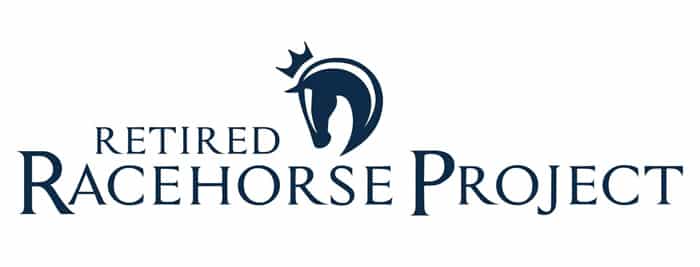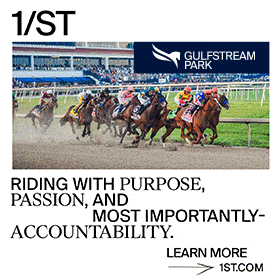Makeover trainers evaluate sport horse potential based on conformation shots
Social media has enabled potential OTTB owners to review a large number of retiring Thoroughbred racehorse listings at any time. Newcomers to the breed might find it challenging to consider a prospect right off the track and decide if it’s a match for their desired purpose.
In this column veteran Thoroughbred Makeover trainers — professionals, juniors and amateurs alike — share their thoughts about assessing and selecting prospects based only on conformation photos. In honor of 2021’s “Mega-Makeover,” we’re sharing the insights of trainers from each competition year from the same discipline.
Our Trainers
■ Hillary Irwin
2021 Thoroughbred Makeover Eventing winner with Fleet Stepper
Irwin’s ties to horses, specifically Thoroughbreds, stem from spending time on her grandparents’ small breeding farm in Alachua, Florida. At age 13 she acquired her first off-track Thoroughbred, an imported Irish steeplechaser. Irwin always has a few OTTBs in her Ocala, Florida, barn, where she trains and teaches in the sport of eventing. She’s produced several OTTBs to the three-star level and has competed at several Makeovers.
■ Jazz Napravnik
2020 Eventing winner with Legend’s Hope
A lifelong horsewoman in both racing and equestrian sports, Napravnik trained her first OTTB, Farah’s Moment, both as her junior racehorse and for eventing and Pony Club. Farah’s Moment went on to be the dam of Napravnik’s first winner and stakes winner as a race trainer, Farah T Salute. Napravnik trained both flat and steeplechase racers for 15 years before transitioning back to the sport horse industry, guiding Thoroughbreds into second careers in eventing, jumpers and dressage at her barn based in Monkton, Maryland.
Choosing a Horse
Hillary Irwin, an eventing trainer in Ocala, Florida, sources her horses through two connections at the track that she calls “the pinnacle of care and training.” Through these relationships she’s nurtured over the years, including ongoing communication once a horse is in Irwin’s program, her connections have an understanding of the types of horses she likes or is likely to successfully produce for sale.
“Usually I get a photo and find a race video of the horse,” Irwin says. “These days, I can go see most of the ones I’m getting in, and I can talk to not only the trainer but the groom, jog the horses up and feel their legs for myself. If everyone that works with a horse likes it, you usually can’t go wrong.”
Jazz Napravnik, who restarts OTTBs out of her Monkton, Maryland, farm, also likes to meet a horse in person. “Pictures and videos are great, but I use them to rule out the horses I don’t want to pursue more than … to choose a horse I do want,” she says. Napravnik won’t look at prospects without videos, which she finds more telling than photos, unless she already knows the trainer or owner well.
Her criteria for the horses themselves depend on whether she’s looking for an amateur client, a resale prospect or a personal horse. For other owners or resale, her first box to check is a good mind. “For myself or for an upper-level prospect, I’m willing to accept some quirks that go with that good mind,” she says. “Beyond that, I look at the way of going. Good conformation doesn’t always equal an efficient way of going.”
Irwin has a few points of conformation she prefers to see in prospects: “I look for one that is quite level or, ideally, uphill in their build. The neck will come out of the shoulder uphill, which lends itself to engaging easier in the hindquarters.”
Beyond conformation, Irwin says she finds trainer and groom input about the horse’s temperament and trainability invaluable. She also notes unusual gaps in a horse’s race record; horses that took a break to continue growing or maturing don’t raise red flags, but she tries to avoid horses with serious injuries if they are at risk of re-injury.
“Usually, for about 90% of horses, that won’t be an issue, because they won’t do anything as hard on them as racing until they hit the four- or five-star level,” she says.
Meet the Prospects
Our model horses come from New Beginnings Thoroughbred Retraining and Adoption, in Howell, New Jersey. Formed in 2014 by Michelle Horgan and Nicole McKinley, New Beginnings is a 501(c)(3) nonprofit accredited by Thoroughbred Aftercare Alliance.
Racing connections donate horses to New Beginnings with a one-time fee of $500 to help defray the cost of care until adoption. New Beginnings also works with racetrack aftercare programs, such as Second Call Thoroughbred Adoption and Placement, Turning for Home and other TAA-accredited organizations (Caribbean Thoroughbred Aftercare and MidAtlantic Horse Rescue, for example), to acquire horses. New Beginnings maintains the ownership of horses for one year after adoption to ensure a successful transition, after which adopters take full ownership.
New Beginnings provides veterinary evaluation and rehab if needed and lightly retrains horses at the walk, trot, canter and sometimes over small jumps prior to adoption. Some adoptable horses also gain exposure to horse shows (including the Thoroughbred Makeover), trails or other activities.
While these three horses might no longer be available for adoption when this issue hits your mailbox, New Beginnings has plenty of prospects looking for their next partners.
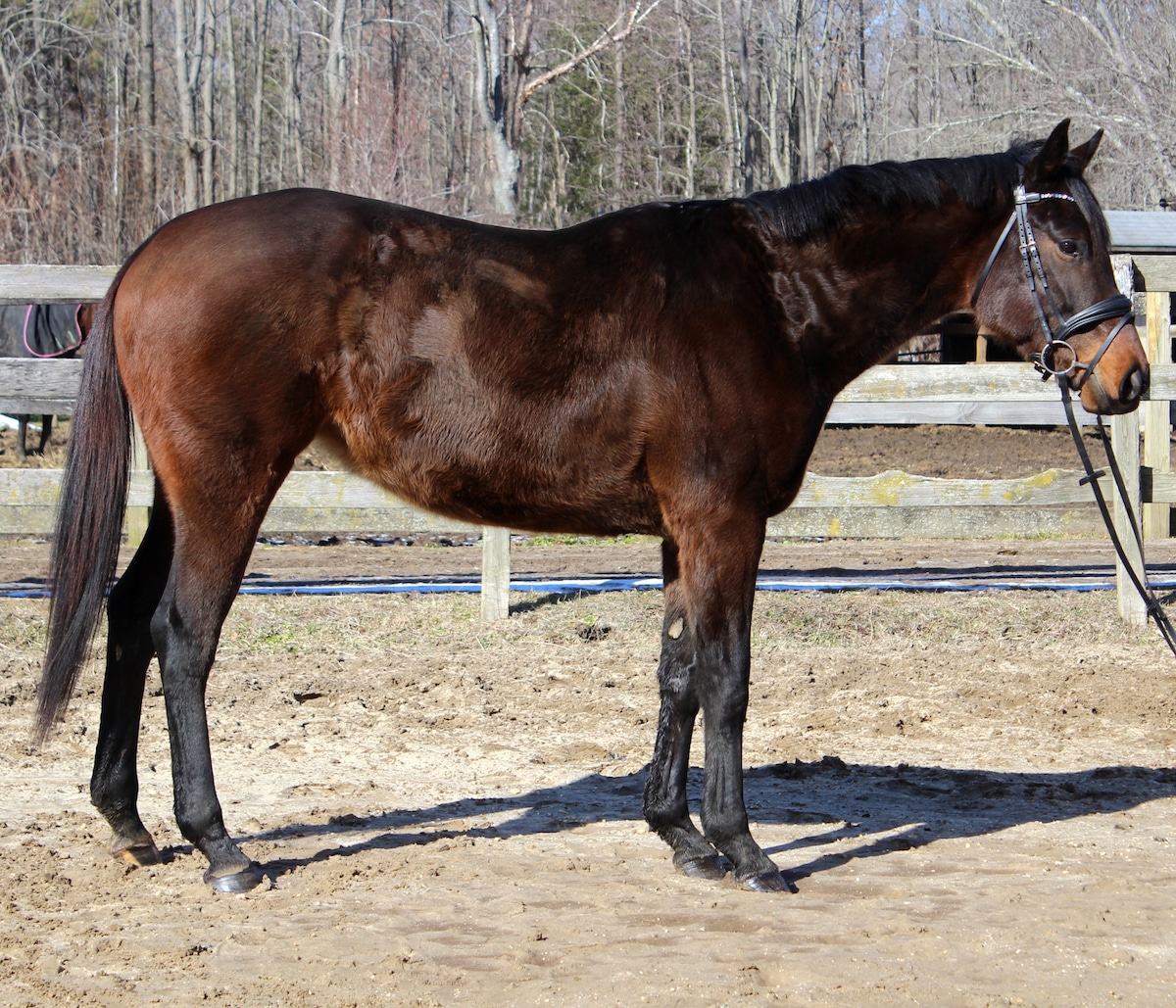
Mama May I (Fury Kapcori – Mamma Lina, by Langfuhr) Courtesy New Beginnings Thoroughbred Retraining and Adoption
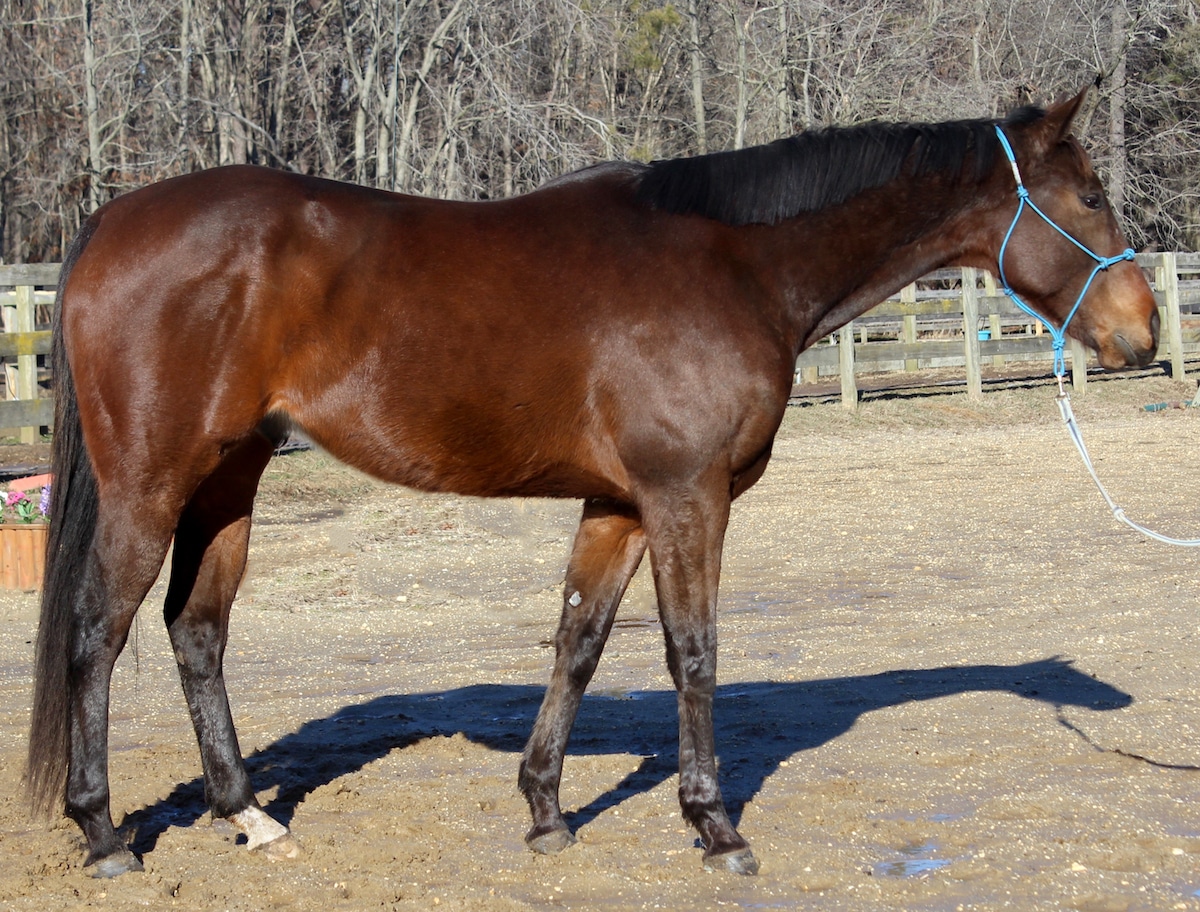
Nicki De Nephew (Nicanor – Splatndacat, by Repent) Courtest New Beginnings Thoroughbred Retraining and Adoption
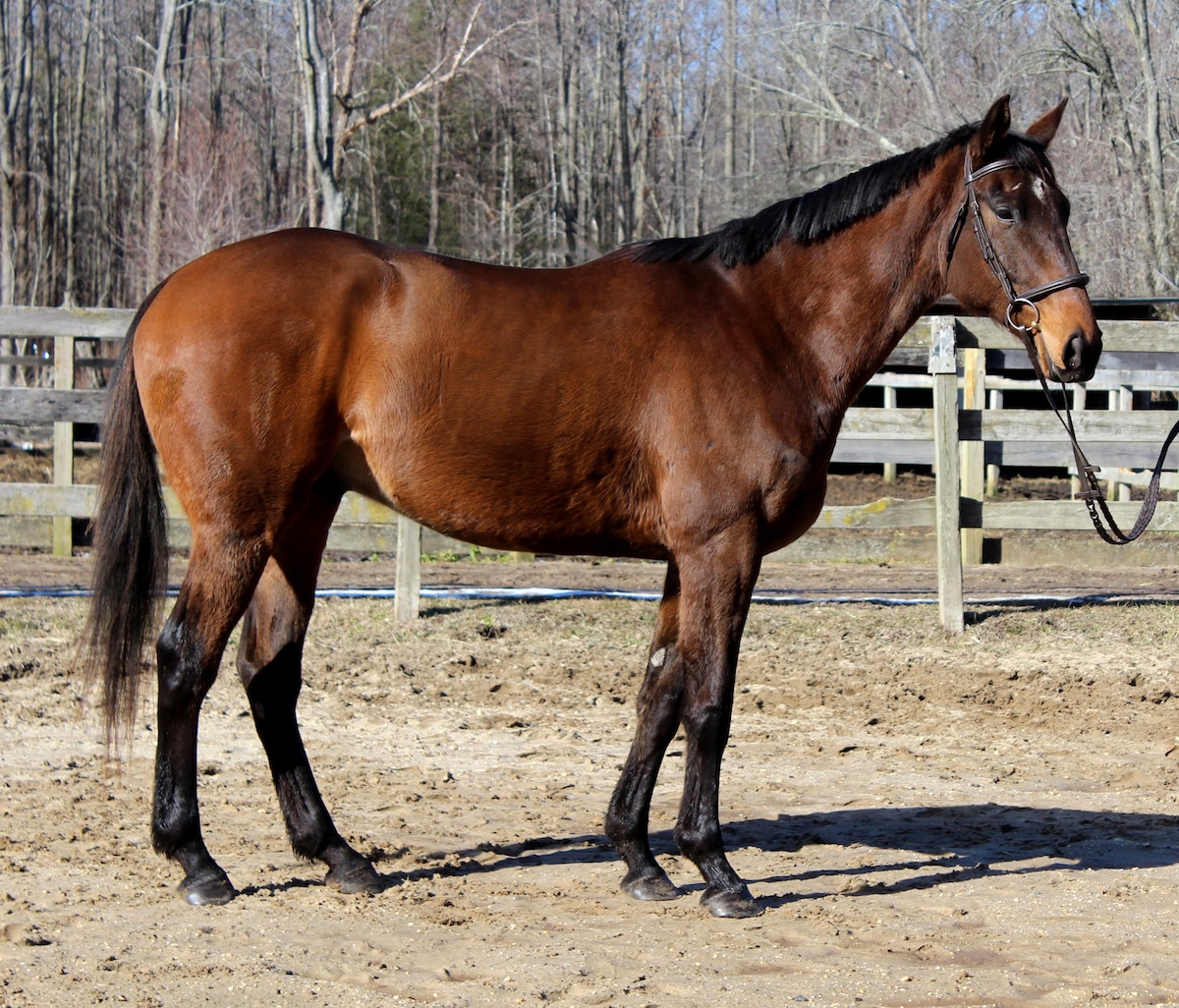
Que Tabagon (First Defence – Heather’s Angel, by Hennessy) Courtesy New Beginnings Thoroughbred Retraining and Adoption
Irwin’s Picks
Horse 2: I really like the overall build of this one. He’s level and fairly short-coupled with no sharp angles to the legs; nothing is too straight or too long. The shoulder is quite broad with a nice slope to it, which would make me believe that he would be quite a soft, lofty mover over time, even if he’s not necessarily that way now. Necks are always important, and this one comes out of the shoulder in a lovely uphill way. His eye is kind and curious, which is one of the most important factors for me.
Horse 3: This one seems quite interested in what is going on in the world without having any tension in its eye. His body is fairly level and, depending on his age, I would expect the withers to come up just slightly as this horse matures, making this one level from back to front. That will allow for easier engagement of the hindquarters without overpowering the front end. The neck comes out in a nice soft, uphill way, which will also make your life easier when doing your flatwork. There are no long angles in the lower limbs, which is also helpful in keeping upper-level horses sound.
Horse 1: That face! The first thing I notice about this one is her eye, and just in general how sweet she looks. Her eye appears kind and bright, and her body looks relaxed, making her seem interested in the world around her without any tension. While a slightly more uphill build could be more ideal for finding balance while working, this horse has a powerful-looking hind end in a short-coupled body that will, in theory, allow you to put her together quite easily when coming back from a gallop (or medium canter) to a more collected show jumping canter. The ability to easily adjust the canter is a desirable trait in small dressage arenas and for both jumping phases. She has a nice shoulder along with nice angles to her pasterns.
Napravnik’s Picks
Horse 3: Although he’s not the most eye-catching of the bunch, I like this horse’s forward-sloping shoulder and higher neck set. I like that aware eye. The top of his rump sits farther back from the point of his hip, telling me he will probably be a good jumper, and I like the angles on his hind end the best of these three. He might be over at the knee just a tad, but that doesn’t bother me. He looks short-coupled, which is a good quality for jumping. That kind eye tells me he’s a trier.
Horse 1 (tie): This horse is built a bit downhill, and she’s a bit straight behind, plus has a shorter neck — but she looks like she has some width to her. Even though she’s a little downhill, the highest part of her rump is just over her hip, which suggests she’ll be able to sit down well on her haunches for dressage. My Second Level horse is downhill, but you’d never know it by looking at him under saddle! I love the kind eye on this horse and, if she has a good mind and easygoing personality to match, I think she’d make a great all-around or lower-level eventing or dressage horse.
Horse 2 (tie): This horse immediately catches my eye with his big shoulder and nice neck, but he’s a bit upright in the hindquarters and pasterns. He does have a nice deep heart girth, which usually suggests good lung power. He also has the same kind eye of the others. I’d want to see this horse move before I made further assessment — his movement might enhance my desire. With just this photo to go off of, I might see him as more of a show hunter than a cross-country horse.
This article was originally published in the Spring 2022 issue of Off-Track Thoroughbred Magazine, the only publication dedicated to the Thoroughbred ex-racehorse in second careers. Want four information-packed issues a year delivered to your door or your favorite digital device? Subscribe now!

